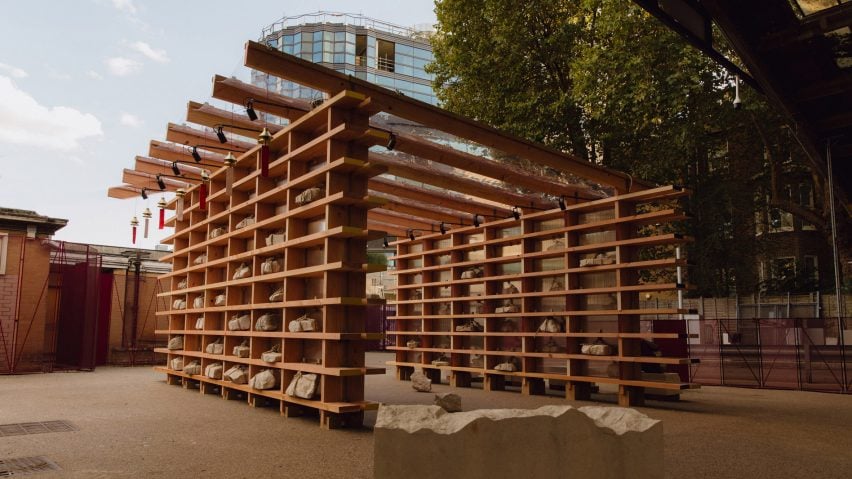
Off The Shelf pavilion is made from standardised components that can go back on the shelf
Rio Kobayashi has collaborated with engineering firm Webb Yates on the designer's first-ever pavilion, an abstraction of his childhood home in Japan, as part of the London Design Festival.
As the name suggests, the Off The Shelf pavilion is made using off-the-shelf materials – standard-sized Douglas fir planks, sheets of polycarbonate and PVC – that were left unaltered so they can be returned to the manufacturers and reused after the installation comes to a close.
"So many pavilions end up in the bin," Webb Yates co-founder Steve Webb told Dezeen. "So we really wanted to use things that were Off The Shelf, clip them together and then take them apart again."
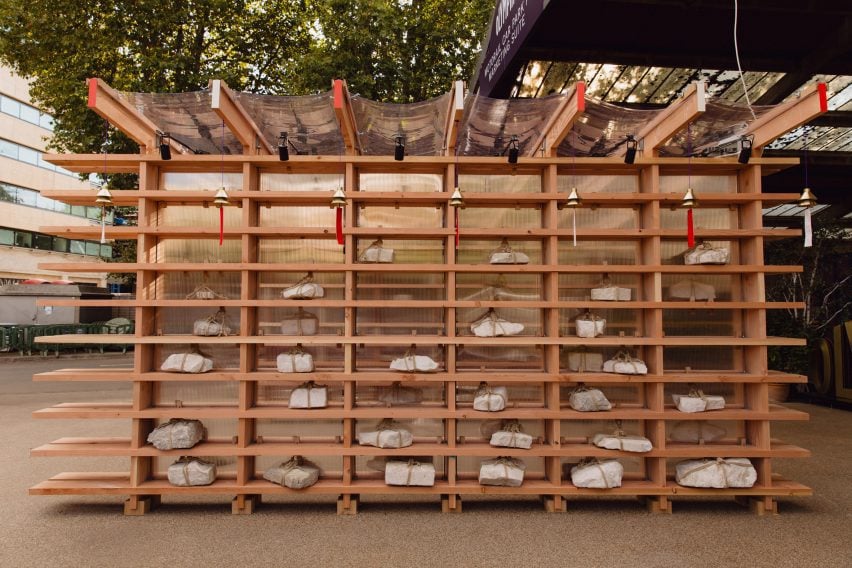
Instead of screws or joints, the engineers used an elaborate post-tensioning system to clamp the different components in place so they can be easily disassembled.
"We're using techniques that you would use for bridges," Webb explained.
"Post-tensioning is not something you use for furniture or even for normal buildings."
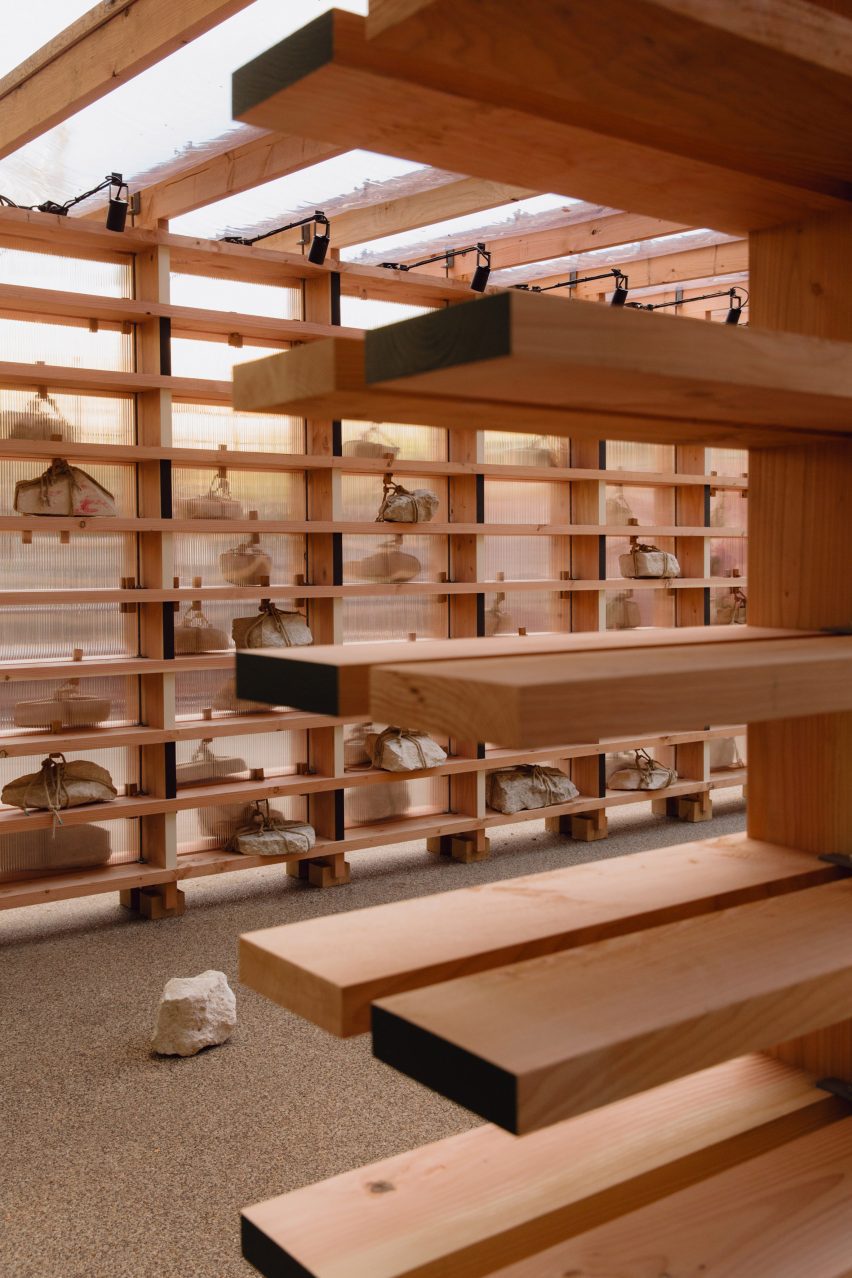
Off The Shelf is the first public art commission from Olympia – a 19th-century events centre in West Kensington that Thomas Heatherwick and SPPARC are currently refurbishing and redeveloping into a 14-acre mixed-use complex set to open next autumn.
The pavilion was designed to reference the development both in its focus on reuse and its use of Portland stone, which forms Olympia's distinctive facades.
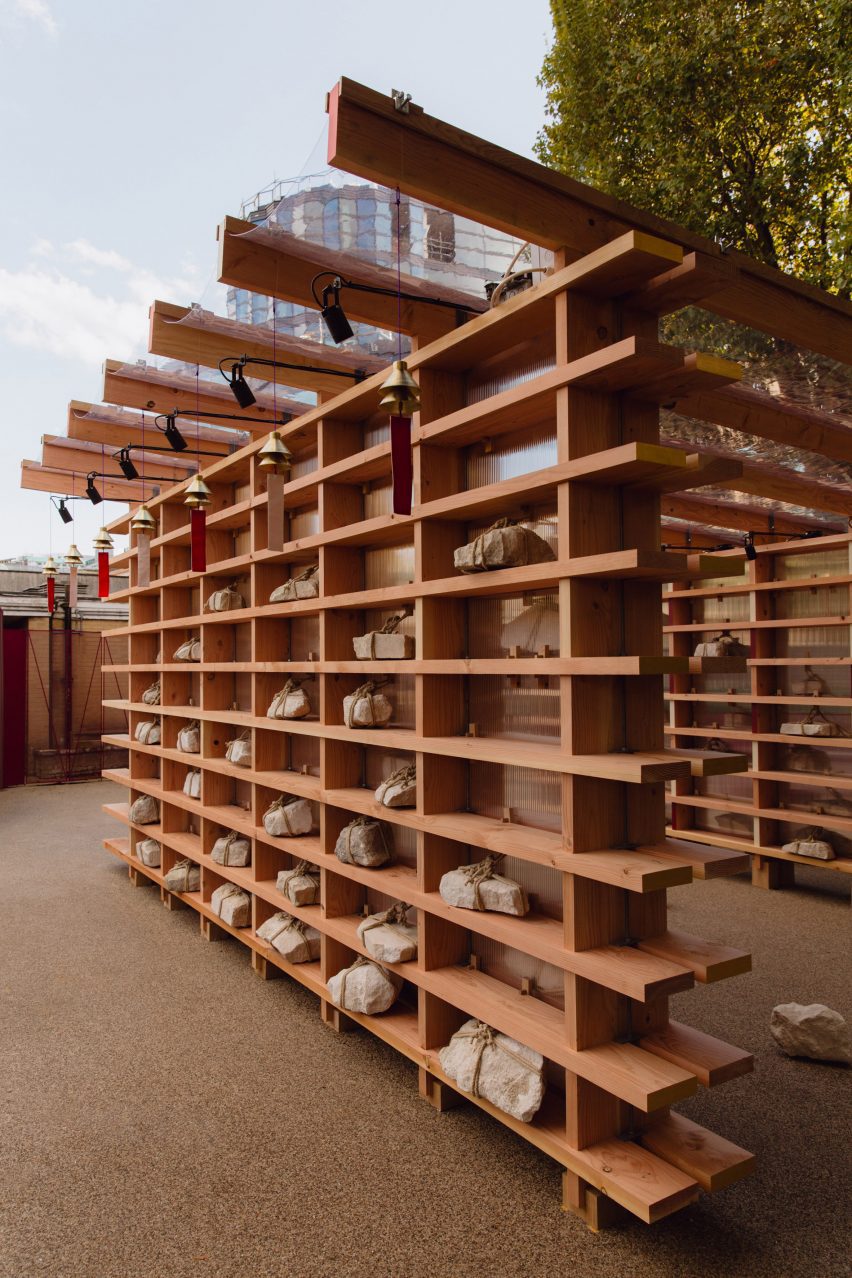
For the installation, offcuts from Portland stone supplier Albion Stone were used to form ballast for the structure's timber sway frame.
Instead of being hidden away, this was displayed prominently on the pavilion's timber shelves, held in place using lengths of hemp rope in a nod to the tomeishi "stopping stones" used to keep visitors on the correct path in a Japanese zen garden.
"Normally, the ballast is kind of underneath, it's hidden, it's a bunch of concrete blocks," said Vickie Hayward, who programmed the project. "But we were like, why don't we just tie the stone onto it and make them kind of artworks in themselves?"
"I love it when everything is structural," Webb added. "I really fucking hate it when something is like a steel frame decorated with something else."
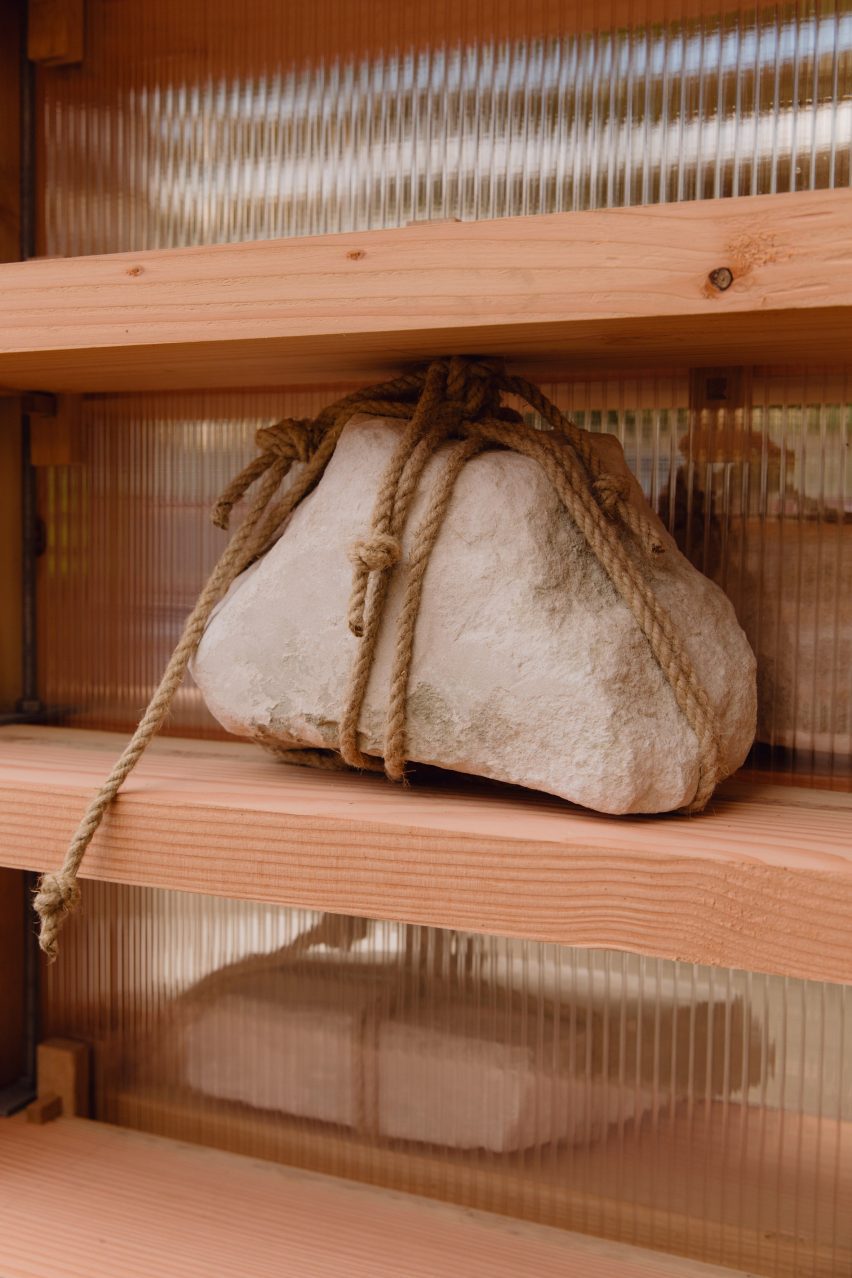
Kobayashi conceived the design as a homage to the home that his mother and father – a retired potter who now uses his kiln to make pizza – built for themselves in the town of Mashiko.
"It's kind of a mixture of a European and Japanese house," the designer said. "They travelled around the world when they were younger, so they also had lots of different objects in the house displayed on the shelves."
"I wanted to recreate this mixed-culture vibe," added Kobayashi, who lived and worked in Italy, Germany, France and Austria before settling in London.
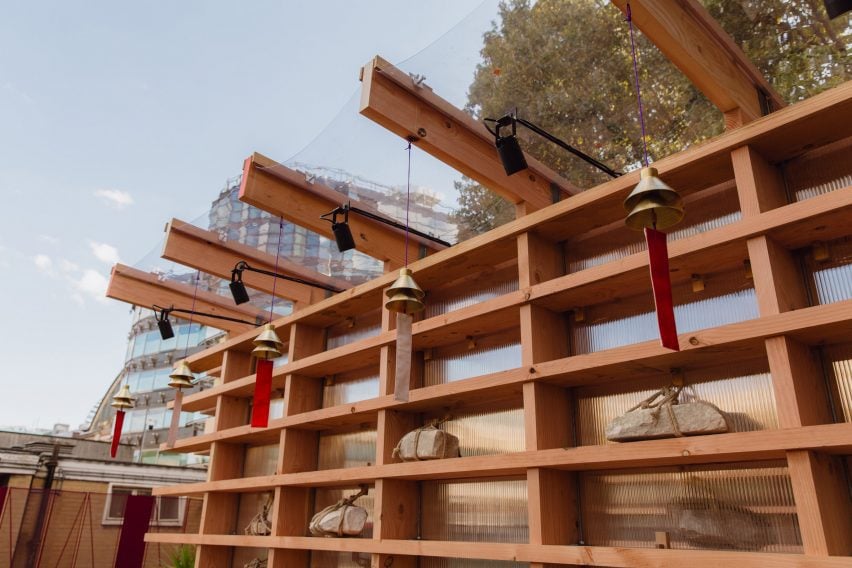
While the pavilion's structure draws on traditional Japanese wood-frame construction, Kobayashi added decorative patterns in a colour palette that nods to the Vienna Secession art movement.
This includes details rendered in real gold leaf – a nod to the work of Austrian artist Gustav Klimt, perhaps the movement's most famous member.
"We did a painted sample and it wasn't good enough," Hayward joked.
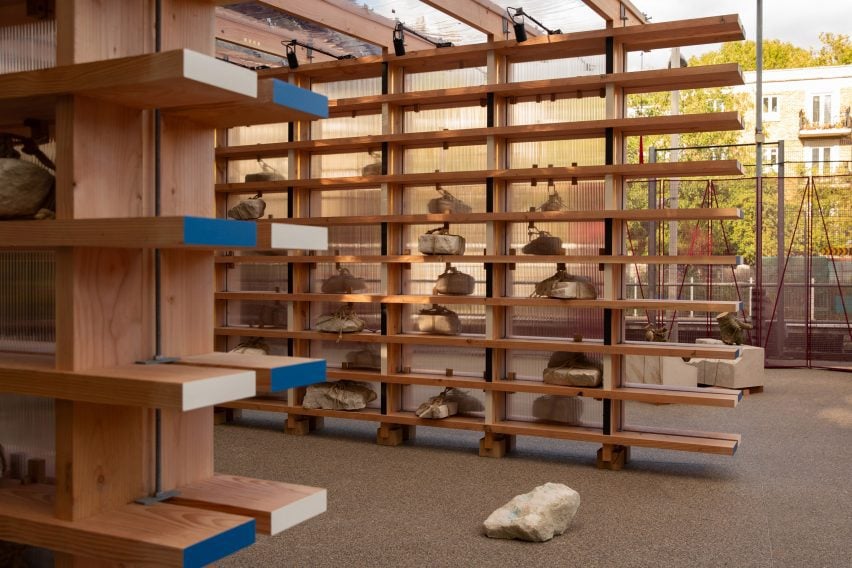
Much like Kobayashi's childhood home, the pavilion was also designed to feel close to nature, open to the elements on two sides with a transparent PVC sheet that forms the slanted roof and creates a small waterfall when it rains.
"I wanted to recreate this kind of feeling of how I grew up, which is in the middle of the countryside so the weather is really near," Kobayashi explained.
"You can see the wind blowing through the trees and rain pouring down."
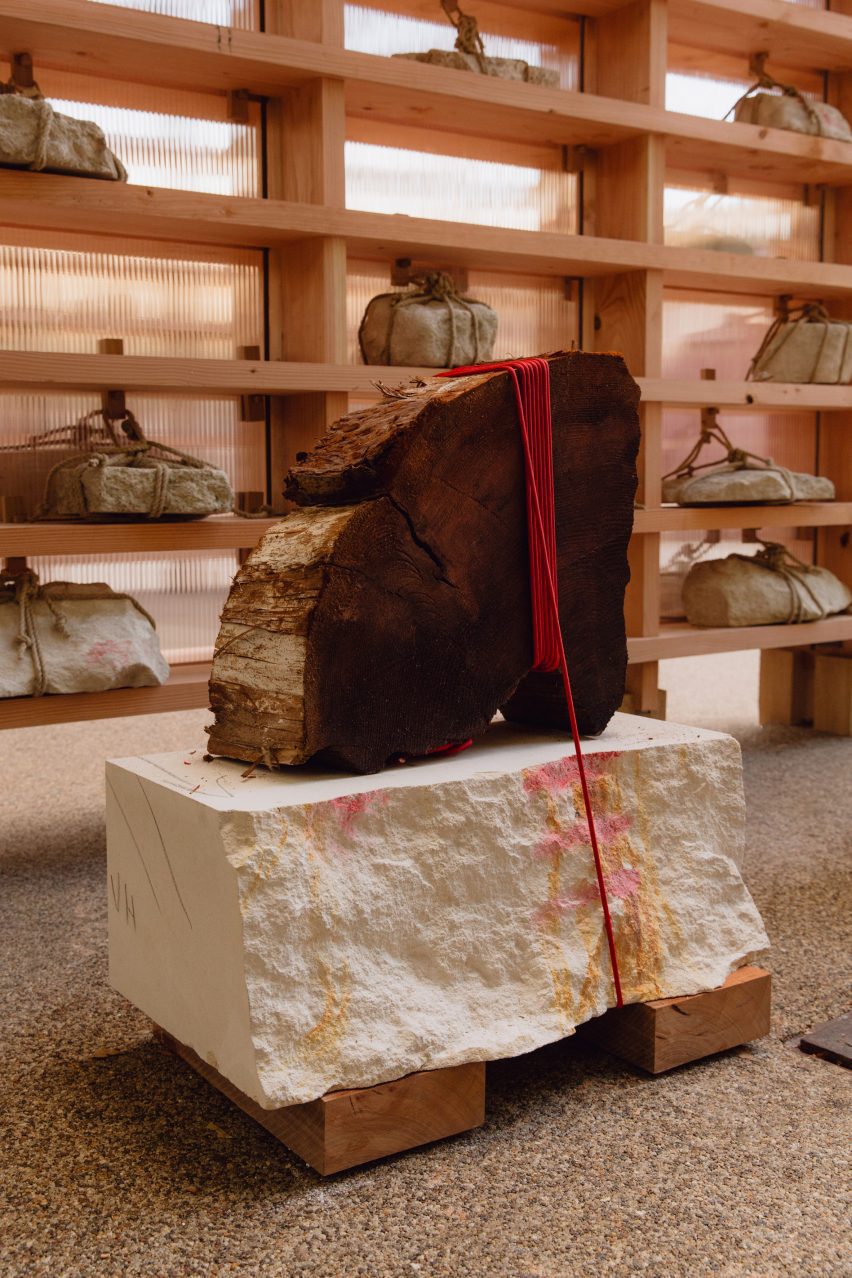
Although launched as part of the London Design Festival (LDF), the pavilion will remain in place until the end of February next year and will be given over to a roster of the designers' friends, who will use the space to host workshops and events.
Kobayashi first rose to prominence with his playful Mikado furniture, which he presented during London Design Festival in 2017. Last year, he returned to the festival with his first solo show, a "living room" where he exhibited works made in collaboration with friends.
The photography is by Christian Cassiel.
London Design Festival 2024 takes place from 16-22 September 2024. See our London Design Festival 2024 guide on Dezeen Events Guide for information about the many other exhibitions, installations and talks taking place throughout the week.